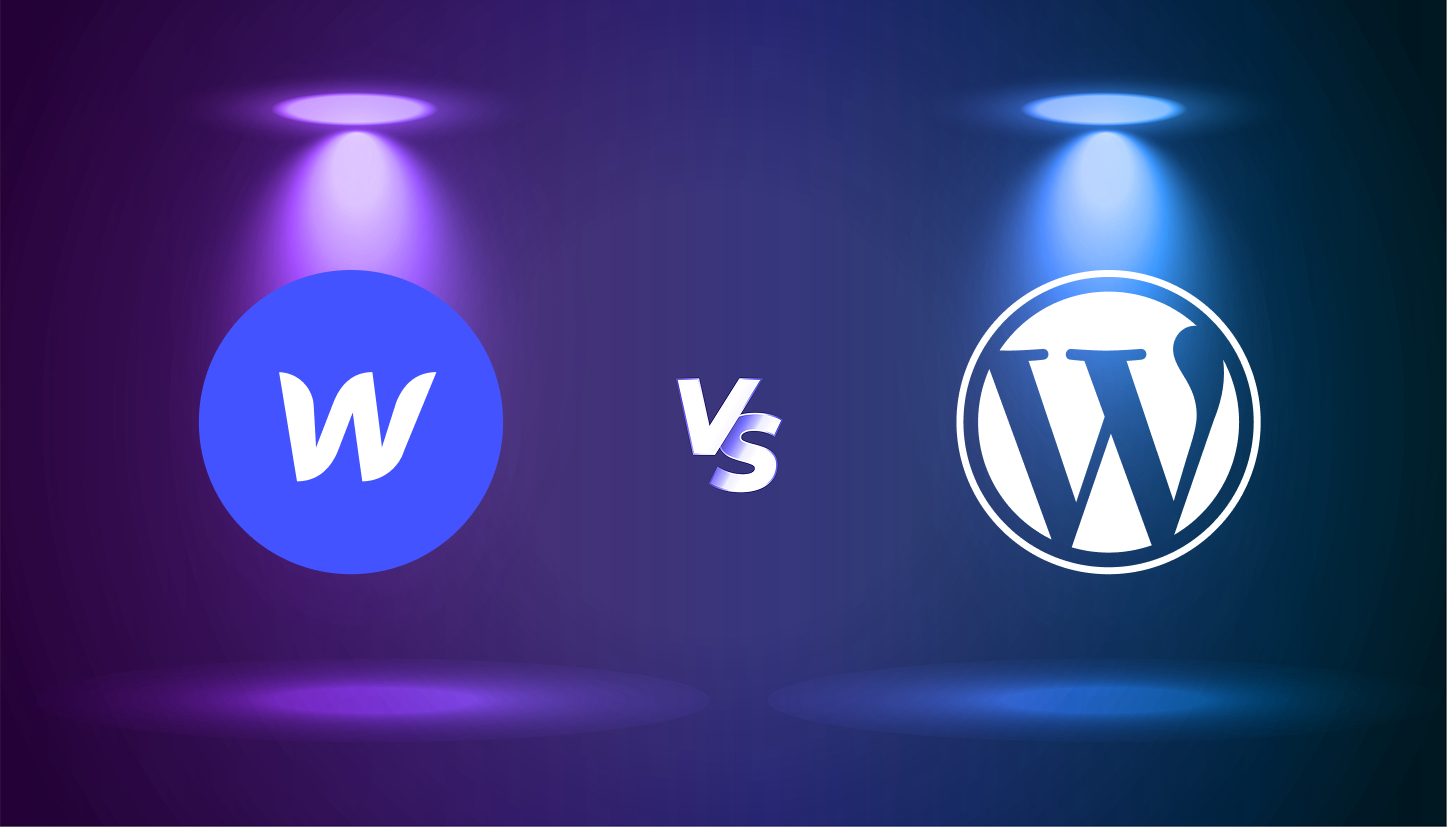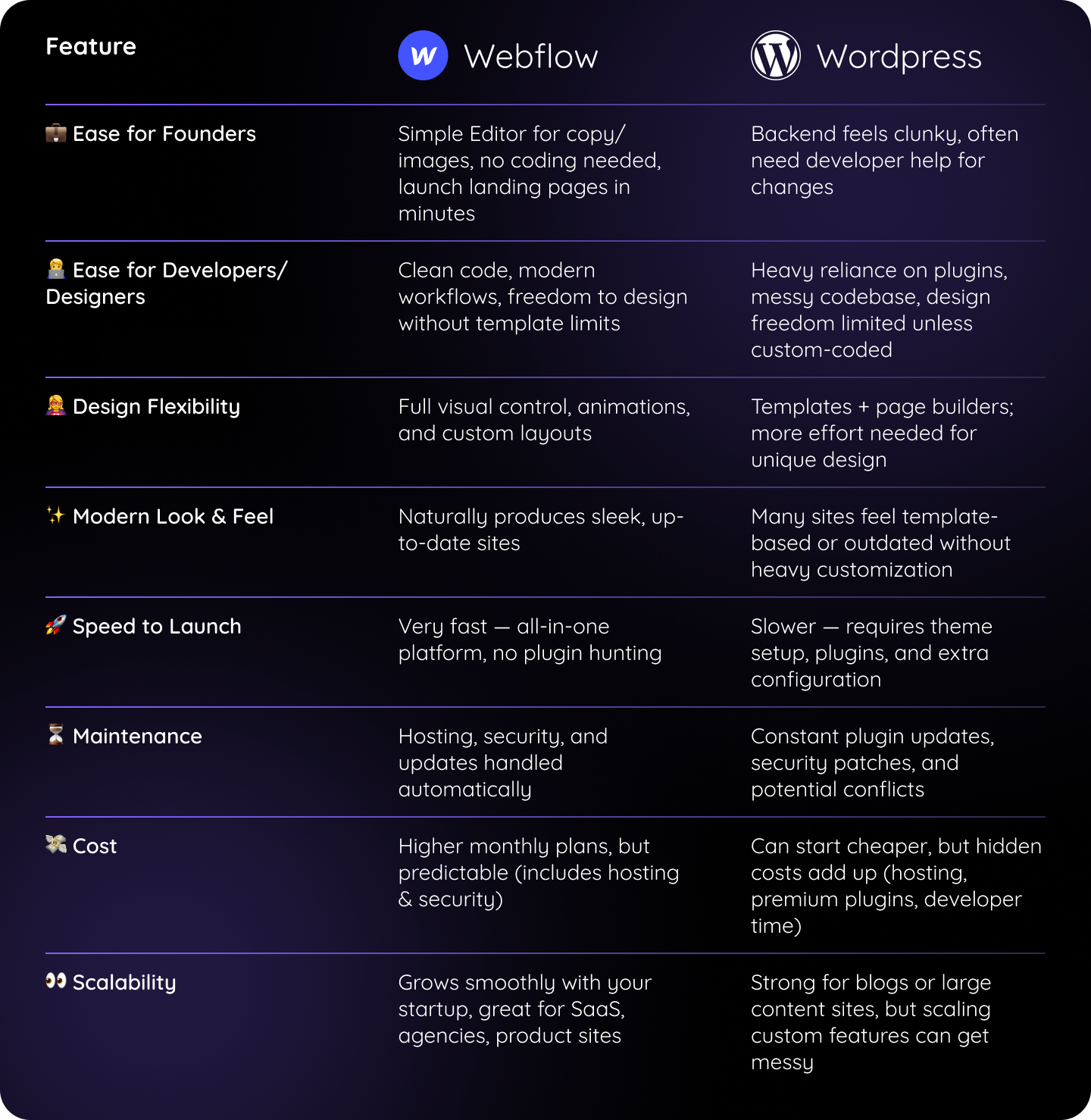
Launching a startup is a race against time. You’re trying to validate ideas, pitch investors, and get customers through the door—all while staying lean. The last thing you want is to spend weeks (or months) untangling a website that should just work.
That’s where the classic debate comes in: Webflow vs. WordPress.
WordPress has history and scale on its side. But Webflow? It’s become the go-to for modern startups. Let’s look at why.
How Founders Experience Each Platform
On WordPress:
Founders usually end up relying on themes and plugins. Want to change a headline? Hope you’re comfortable digging into a clunky backend or asking your developer for help. Want to launch a new landing page for a campaign? Better budget extra time—it won’t be instant.
And while WordPress can be cheap to start, it comes with “hidden costs”: maintenance, constant updates, plugin conflicts, and security patches. For a founder, that means more distractions and less time focusing on growth.
On Webflow:
Founders get a completely different experience. Updating text, swapping out images, or publishing a blog post is as simple as clicking and typing. No coding, no complicated menus. If you want a new landing page, you can duplicate an existing one and tweak it in minutes.
That speed to market is gold for startups. Instead of bottlenecks, you’re free to iterate quickly, test ideas, and keep your site looking sharp without waiting on someone else.
How Developers & Designers Experience Each Platform
On WordPress:
Developers often joke that WordPress is “90% plugin babysitting.” You spend half your time making sure updates don’t break the site. The backend is heavy, the code can get messy fast, and every new feature usually means stacking another plugin on top of an already wobbly pile.
Designers face their own frustrations. Unless you custom-code a theme, you’re often trapped inside templates that don’t allow much creative freedom. Page builders like Elementor help, but they add bloat and can feel like patchwork solutions.
On Webflow:
Developers and designers get breathing room. Webflow’s visual editor translates directly into clean HTML, CSS, and JavaScript—no weird theme overrides or plugin chaos. Developers can still inject custom code where needed, but most of the heavy lifting is already built in.
For designers, Webflow is a dream. It’s essentially like designing in Figma, but live. You’re not stuck fighting templates—you can bring your vision to life exactly as you imagine it. That’s why Webflow sites often feel more modern and polished than WordPress ones: they’re custom-built, not cookie-cutter.
Why Webflow Sites Look More Modern
There’s a reason you can usually spot a WordPress site versus a Webflow site.
- WordPress leans on pre-made themes that can feel outdated or overused.
- Webflow gives direct control over layout, animations, and interactions.
The result? Webflow sites often feel cleaner, more branded, and more aligned with today’s design standards. For startups, that first impression matters—investors and customers can tell when your site feels modern vs. when it feels stuck in 2015.
So, Which Should Startups Choose in 2025?
- If you’re a founder: Webflow keeps things simple. You can actually manage your site yourself without begging your developer for every little change. That’s huge for speed and autonomy.
- If you’re a developer or designer: Webflow saves you from plugin headaches and gives you freedom to design modern, custom sites without fighting the platform.
WordPress still makes sense for massive blogs or hyper-specific use cases, but for most early-stage startups? Webflow is the clear winner.
The bottom line: Startups succeed when they can move quickly and look credible while doing it. Webflow makes that possible—for both the founders running the business and the developers/designers building the product. That’s why in 2025, more startups are saying goodbye to WordPress and hello to Webflow.
Quick Comparison: Webflow vs. WordPress for Startups in 2025

This table makes it obvious: Webflow is the lean, modern choice, while WordPress feels heavier and more maintenance-heavy.






